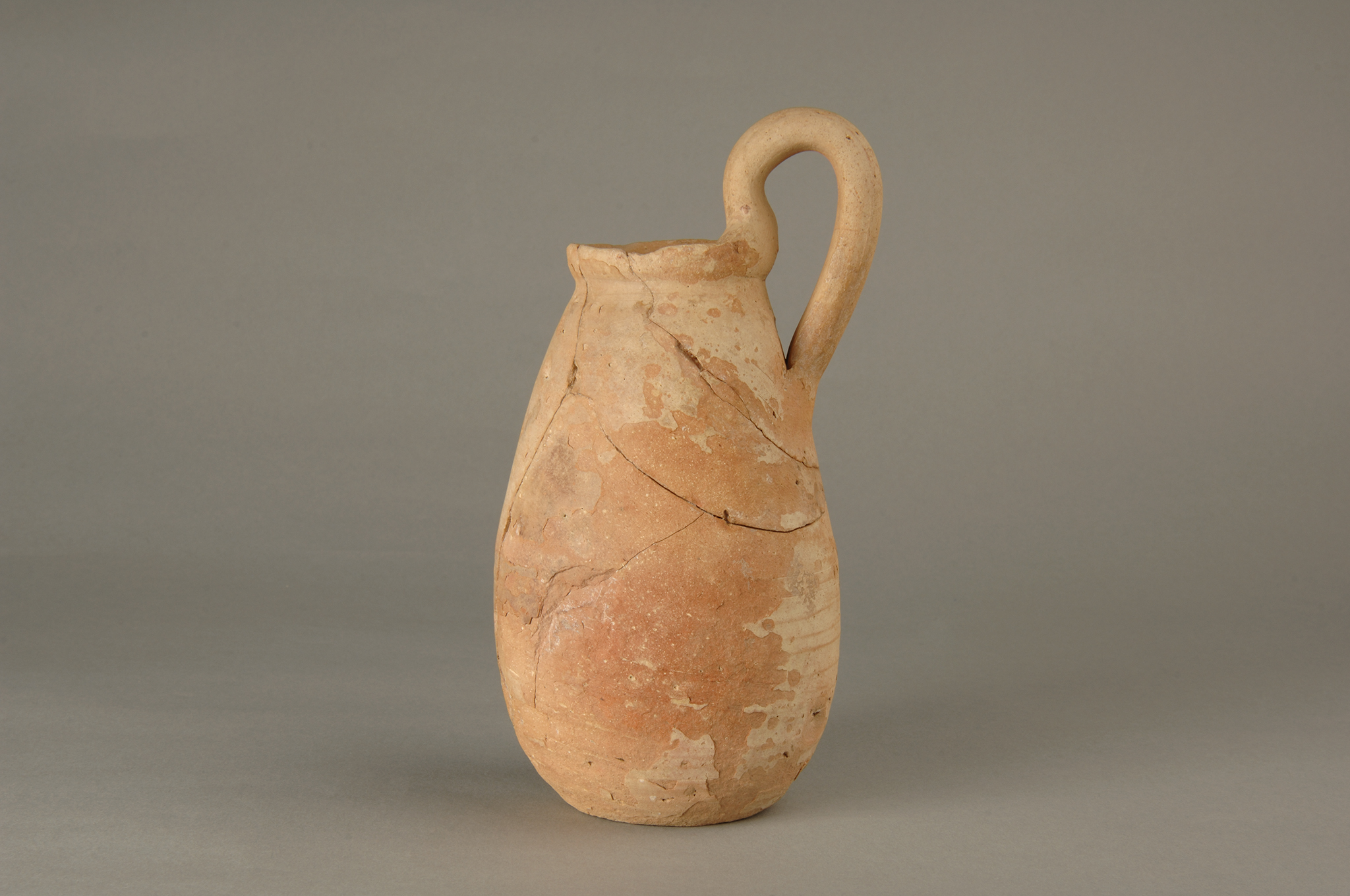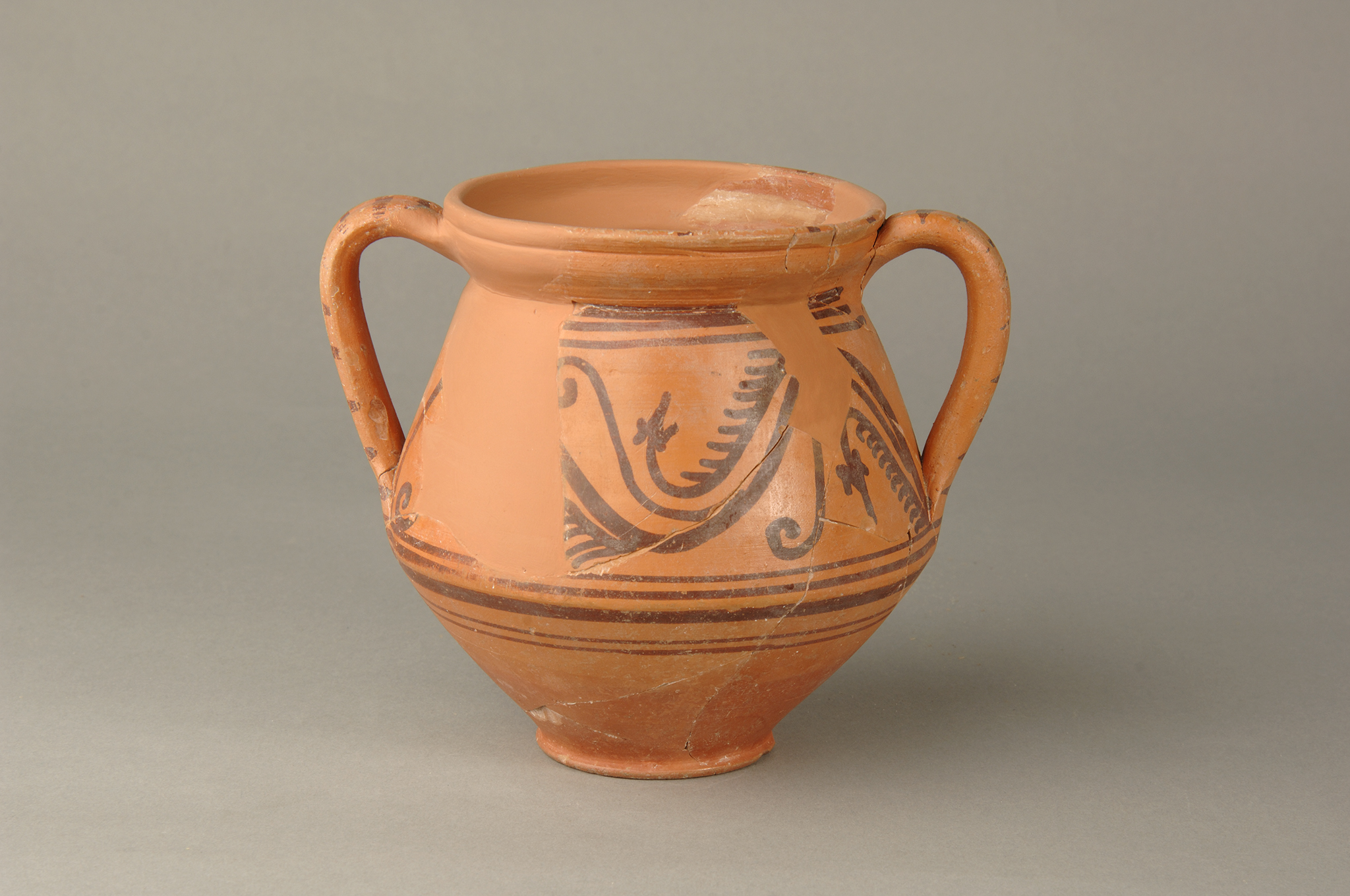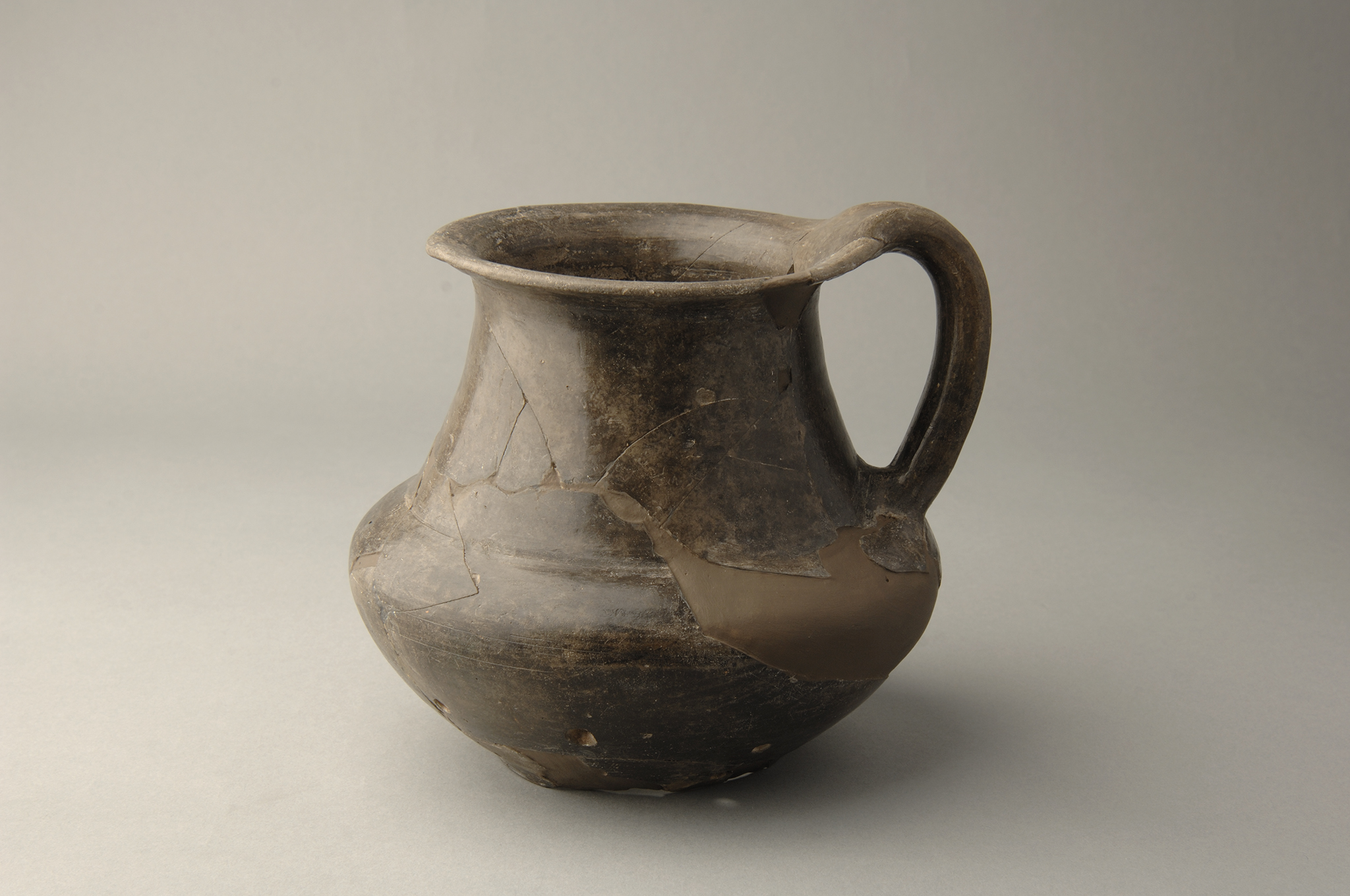- Object type
- olpe
- Production date
- -400 / -100
- Fabric
- common Punic pottery
- Culture
- Protohistory and Iberian world
- Discovery location
- Pla de les Tenalles
- Materials
- pottery
- Township
- Granyanella (Europa, Espanya, Catalunya, Lleida, La Segarra)
- Technique
- wheel-thrown
- Where is it?
- Exposició permanent
- Dimensions
- 183 52 mm





